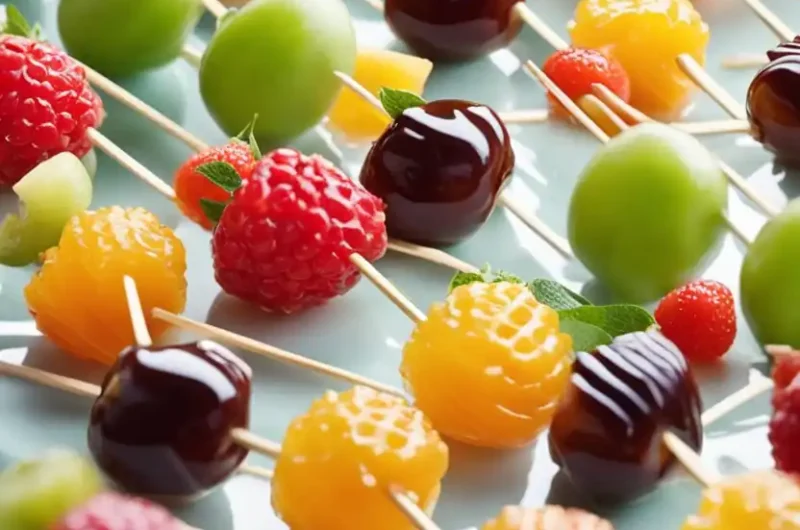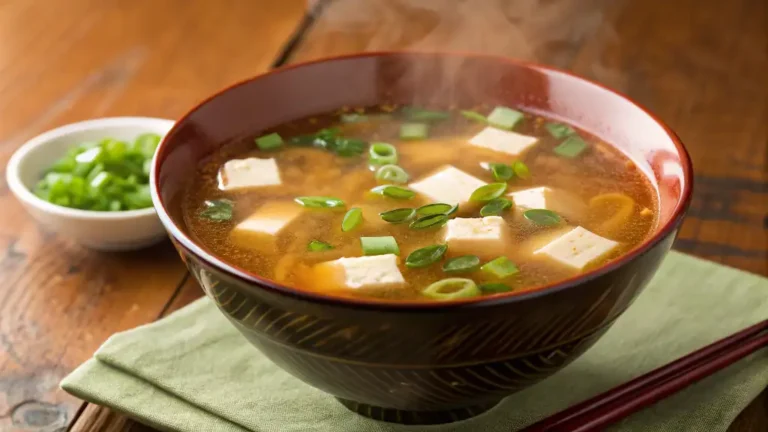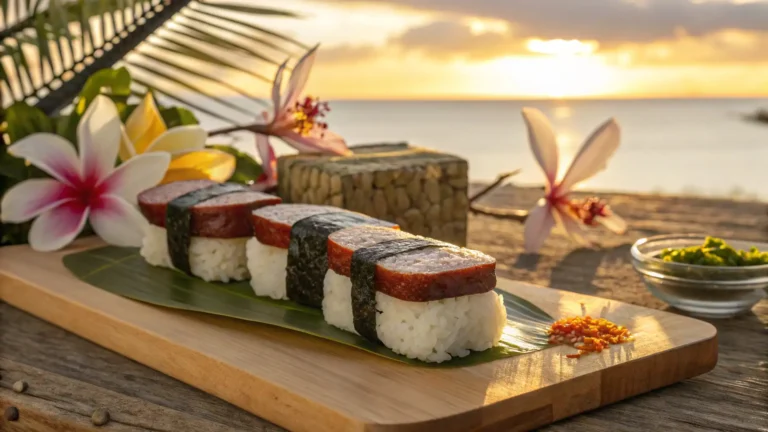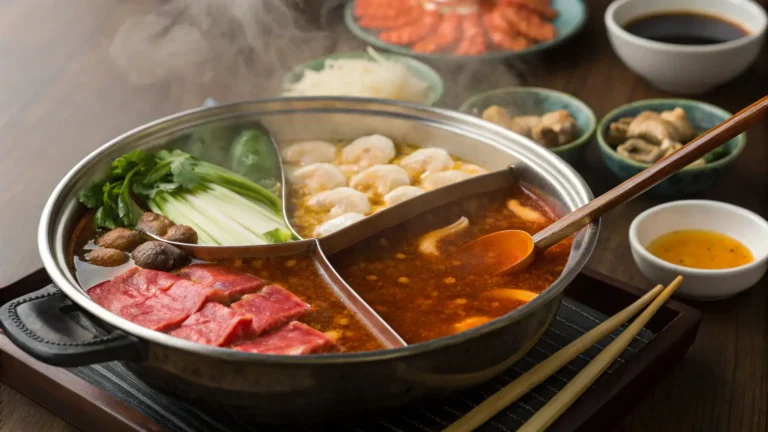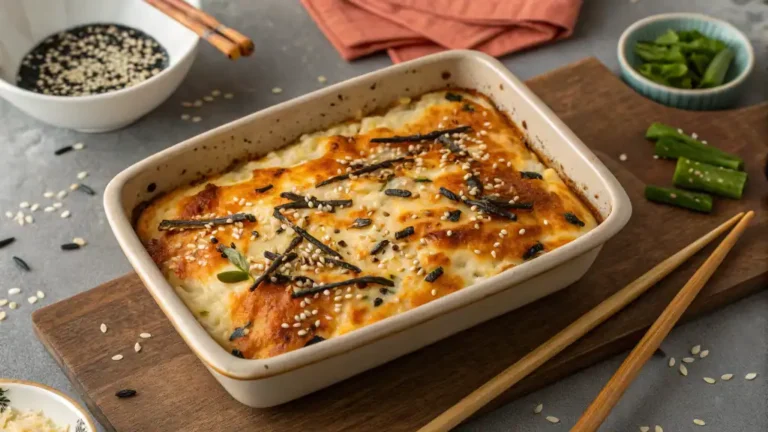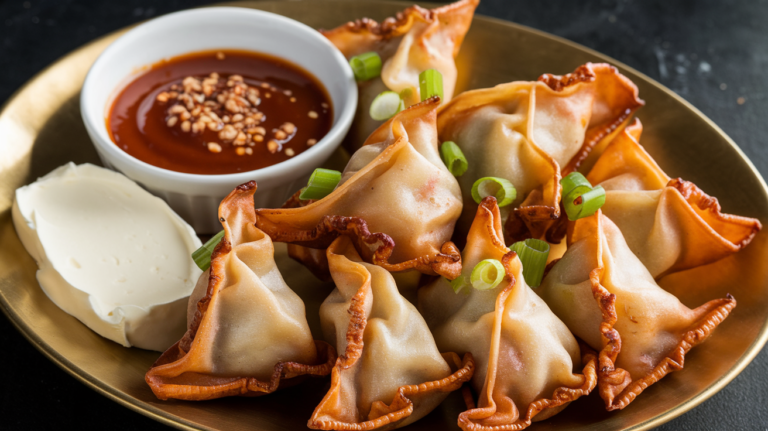Easy Tanghulu Recipe: A Step-by-Step Guide to Making Delicious Chinese Candied Fruits
Discover Tanghulu recipe, a delightful Chinese candied fruit snack! This easy recipe features crunchy Chinese fruit snack and only a few simple ingredients.
JUMP TO RECIPE
What Is Tanghulu?
Tanghulu is a delightful traditional Chinese candy that combines fresh fruit with a crunchy sugar coating. This fun and visually appealing treat is not only a staple in Chinese street food but also a perfect way to enjoy fruit in a new and exciting form. Making tanghulu at home can be a rewarding experience that brings the flavors of Chinese culture right to your kitchen.

In this blog post, I will share a straightforward recipe that will guide you through each step, from selecting the right fruit to achieving that perfect sugar shell. Whether you choose strawberries, cherries, or kiwis, you’ll find that this treat is as enjoyable to make as it is to eat.
Get ready to impress your family and friends with this sweet snack that is sure to make any occasion more special. With just a few simple ingredients, tanghulu is easy to prepare and an excellent choice for all ages.
Key Takeaways
- Tanghulu is a traditional Chinese candy made with fruit and sugar, often referred to as a Chinese candied fruit snack.
- The recipe includes tips for selecting fruit and making the perfect sugar syrup.
- Tanghulu can be customized with various fruits and is best served fresh.
History Of Tanghulu
Tanghulu is a traditional Chinese snack that I find fascinating. It dates back over 800 years, originating during the Song Dynasty (960-1279) in Northern China. Initially, it was called bingtanghulu and is deeply rooted in Chinese culture.
Originally, Tanghulu was made using Chinese hawthorn berries. These tart fruits were coated in sugar syrup, which then hardens to create a sweet and crunchy exterior, especially when using food coloring for a vibrant look.
As I explored more, I learned that Tanghulu became popular as street food in various Chinese cities. Vendors would sell this treat, particularly during the colder months.
Today, while the traditional use of hawthorn remains, many other fruits are used. These include strawberries, grapes, and even exotic options like dragon fruit. This evolution shows how Tanghulu has adapted over time while keeping its cultural significance intact.
The blend of flavors and textures makes Tanghulu a unique snack that carries historical importance and reflects regional culinary practices.
Fruit for Tanghulu
Choosing the right fruit is essential for making tanghulu. The texture and flavor of the fruit can significantly impact the final treat. When selecting fruit, I focus on two main areas: firmness and seasonal availability.
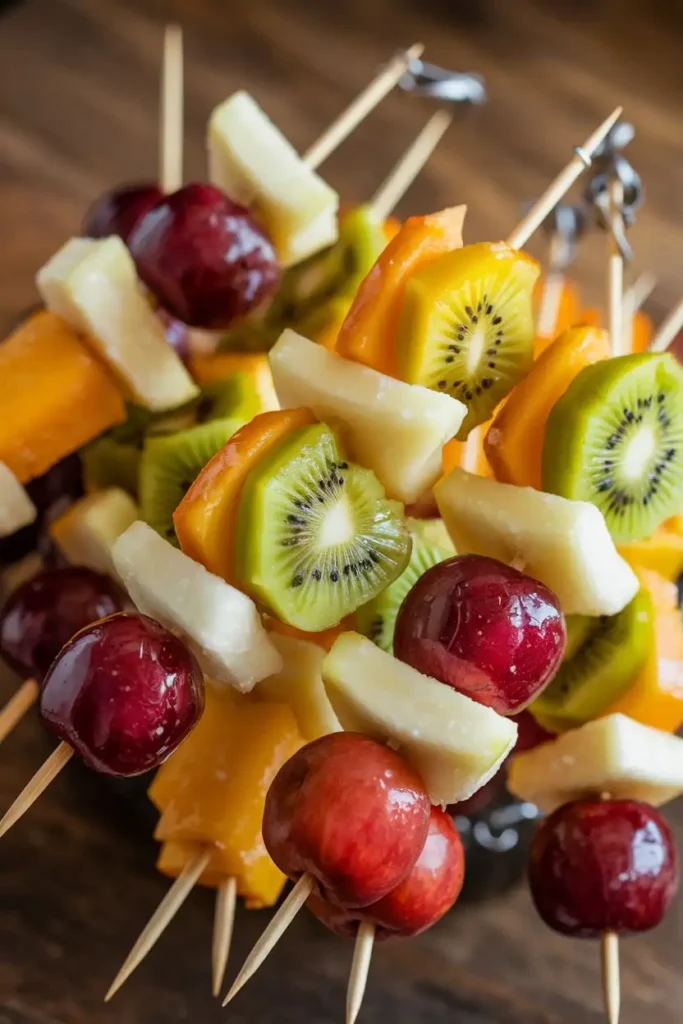
Firm Fruit Choices For Homemade Tanghulu Recipe
For tanghulu, I always choose firm fruits. They hold their shape well during the candy-making process. Some excellent options include:
- Hawthorn Berries: Traditional and slightly tart, these berries are a classic choice.
- Strawberries: Their sweetness works well with the sugary coating.
- Kiwi is a great addition to learn how to make tanghulu.: This fruit adds a unique flavor and a vibrant color.
- Blueberries: They create a burst of sweetness and are easy to handle.
- Raspberries and Blackberries: Both are firm enough and provide a delightful taste.
Soft or overripe fruits can become mushy and lose their texture under the candy coating. Firm selections ensure that the tanghulu retains its shape while offering a satisfying bite.
Tanghulu Variations
I also consider seasonal factors when picking fruit for tanghulu. In winter, certain fruits are more readily available or come into season.
- Winter: Hawthorn berries are popular during cold months, as they are often harvested fresh.
- Spring and Summer: Strawberries, blueberries, and raspberries become more abundant and can be used for vibrant, sweet tanghulu.
- Fall: Kiwi may not be as common but still works well.
By understanding which fruits are in season, I can create the best tanghulu while ensuring that the selections are fresh and flavorful.
Preparation Basics: Easy Tanghulu Recipe Measurements
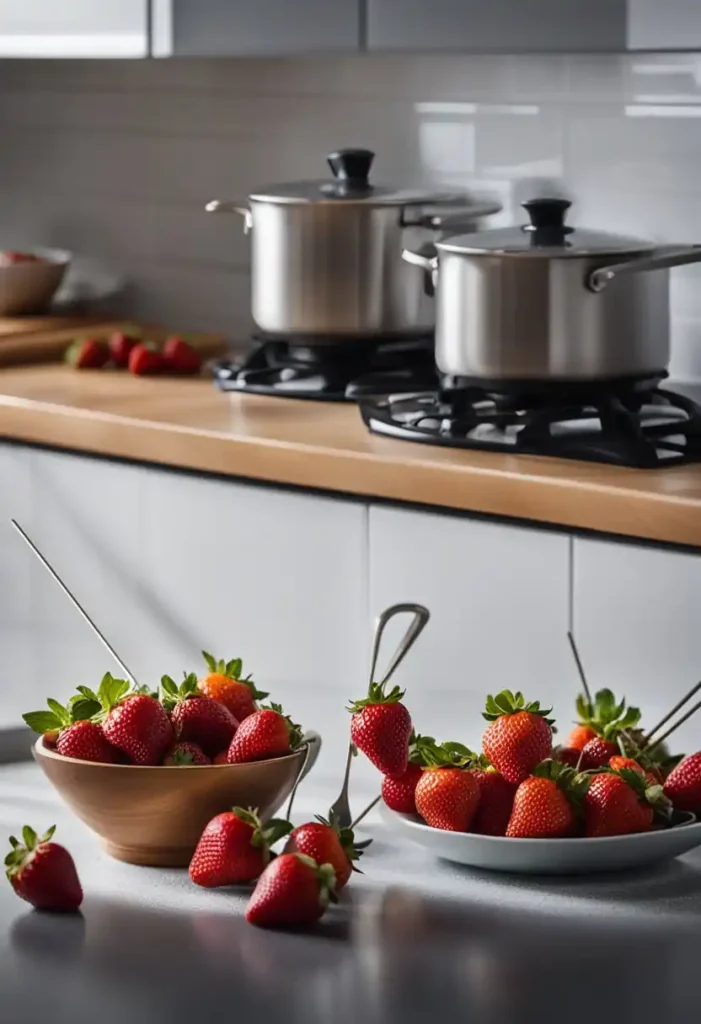
Before I start making tanghulu, I ensure that I have everything ready. This includes cleaning the fruit and preparing my cooking station. These steps make the process smoother and help me achieve the best results for my recipe card.
Cleaning and Skewering Fruit
I begin by choosing fresh fruit, such as strawberries, orange slices, candy grapes, or mandarin slices. It’s important to wash the fruit thoroughly to remove any pesticides or dirt. I rinse them under cold water and pat them dry with a clean towel.
After cleaning, I take bamboo skewers, which are perfect for holding the fruit. I insert each piece of fruit onto the skewer, leaving some space between them. This allows the syrup to coat the fruit evenly. I typically use about 3-4 pieces of fruit per skewer.
Setting Up the Cooking Station
Next, I prepare my cooking station. I gather my kitchen tools, including a medium pot, a thermometer, and a heat-resistant spatula. It’s crucial to have everything on hand before I start cooking, as the sugar syrup needs close attention.
I measure out the sugar and water ahead of time. A common ratio is 2 cups of sugar to 1 cup of water. Once the ingredients are ready, I place the pot on the stove, set the heat to medium-high, and wait for the mixture to reach the hard-crack stage. This stage is essential for a glossy, crunchy coating on the fruit.
How To Make the Sugar Water Syrup?
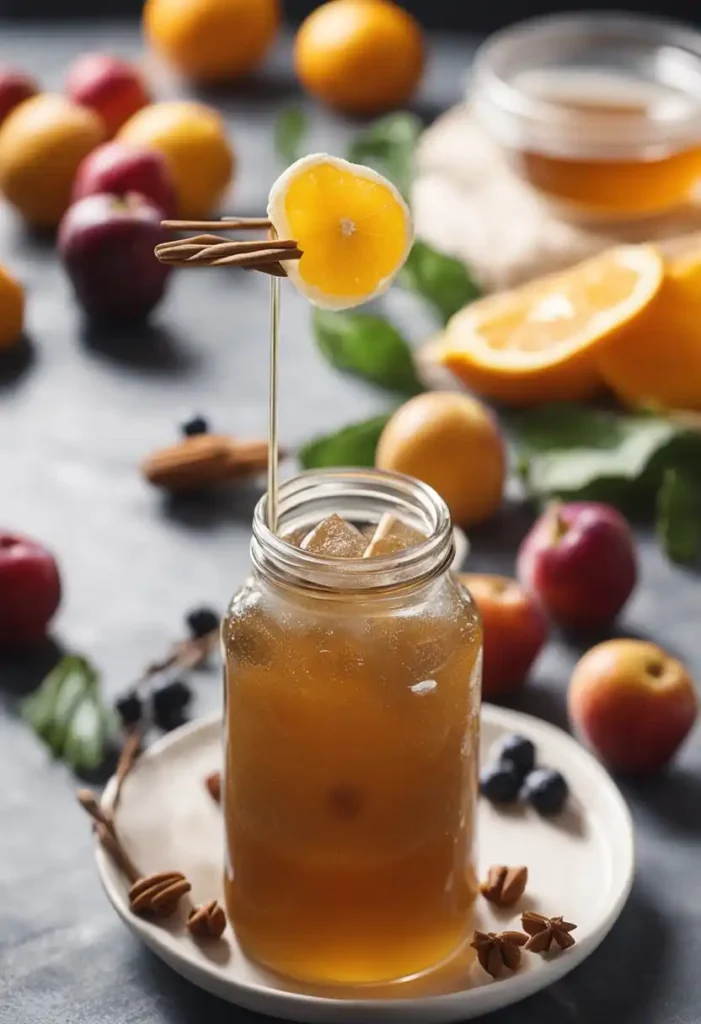
To create tanghulu, the sugar syrup is key. I’ll go through how to cook the syrup to the hard-crack stage and how to use a candy thermometer for accurate results.
Cooking to Hard-Crack Stage
Cooking the syrup to the hard-crack stage is important for achieving that perfect crunch. To do this, I combine 2 cups of granulated sugar and 1 cup of water in a saucepan and stir the syrup.
I mix them gently over medium heat until the sugar dissolves completely. Once dissolved, I stop stirring to prevent crystallization. I then let the mixture boil undisturbed. The goal is to reach a temperature of 300°F (150°C).
As it boils, the syrup will bubble and thicken. I keep a close eye on it, as it can go from perfect to burnt quickly. At this stage, the syrup should form hard, brittle threads when dropped in cold water.
Using a Candy Thermometer
Using a candy thermometer helps ensure precision in reaching the hard-crack stage. I place the thermometer in the pot, making sure it does not touch the bottom, as that could give an inaccurate reading.
I watch the thermometer rise as the syrup cooks. Once it reaches 300°F, I know it’s ready. If I don’t have a thermometer, I can test the syrup by dropping a small amount into cold water. If it hardens, it’s good to go.
Remember to work quickly once it reaches this temperature. The syrup cools and hardens fast, making it important to coat the fruit right away for the best results.
Dipping and Coating Techniques
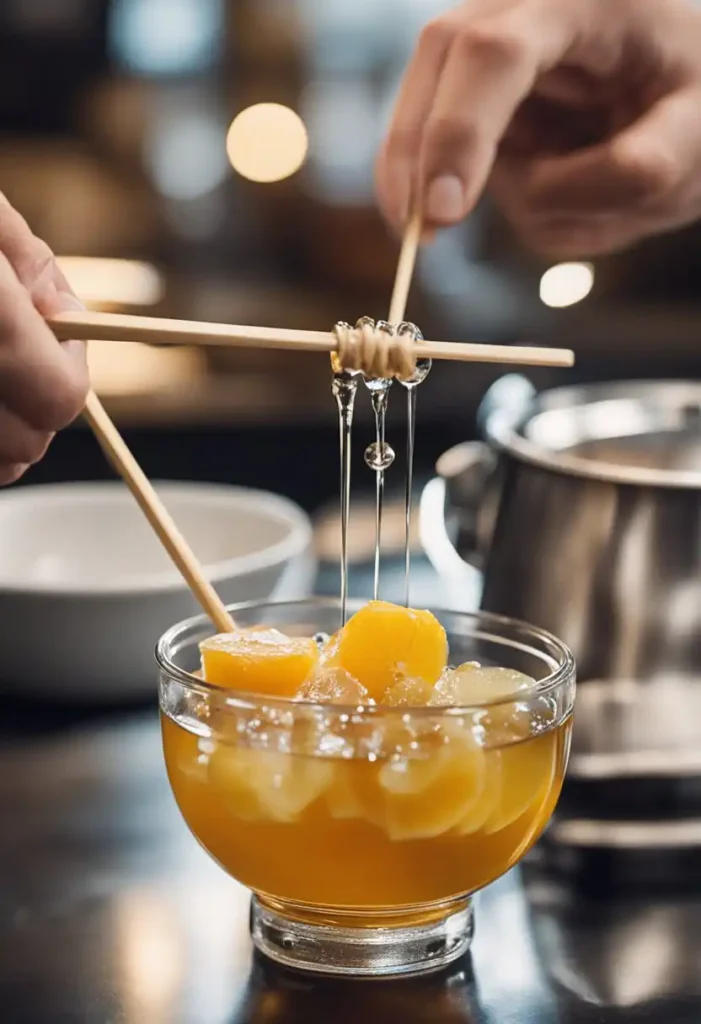
Creating the perfect tanghulu involves specific techniques for dipping and coating the fruit. These steps ensure that the candy shell is both beautiful and crispy and work best for tanghulu.
Achieving the Perfect Candy Shell
To get a great candy shell, I start by preparing the sugar syrup. I mix sugar and water in a pot, heating it until it reaches about 300°F, which is known as the hard crack stage.
Using a candy thermometer is crucial here to avoid undercooking or burning the syrup. Once ready, I remove the pot from heat and let it sit briefly.
Next, I dip the dry fruit into the syrup. I need to rotate the fruit steadily to ensure an even coating. If the syrup thickens too much, I gently reheat it to keep it flowing smoothly and bring to a boil if necessary, adding corn syrup if needed. This attention to temperature helps create that glossy candy shell.
Handling and Drying
Proper handling of the fruit is key to avoiding a sticky mess. I always make sure the fruit is completely dry before dipping it into the sugar syrup. This step prevents unwanted sugar crystals from forming.
After coating, I place the tanghulu on a cooling rack or parchment paper to set. I avoid touching the shells until they cool completely in ice water. Storing the finished chinese fruit snack is important too. I keep them in an airtight container in a cool, dry place to maintain their crisp texture.
How To Make Tanghulu?
I will guide you with step-by-step instruction for preparing easy tanghulu recipe at home that anyone can learn how to make this crunchy fruit snack in 10 minutes:
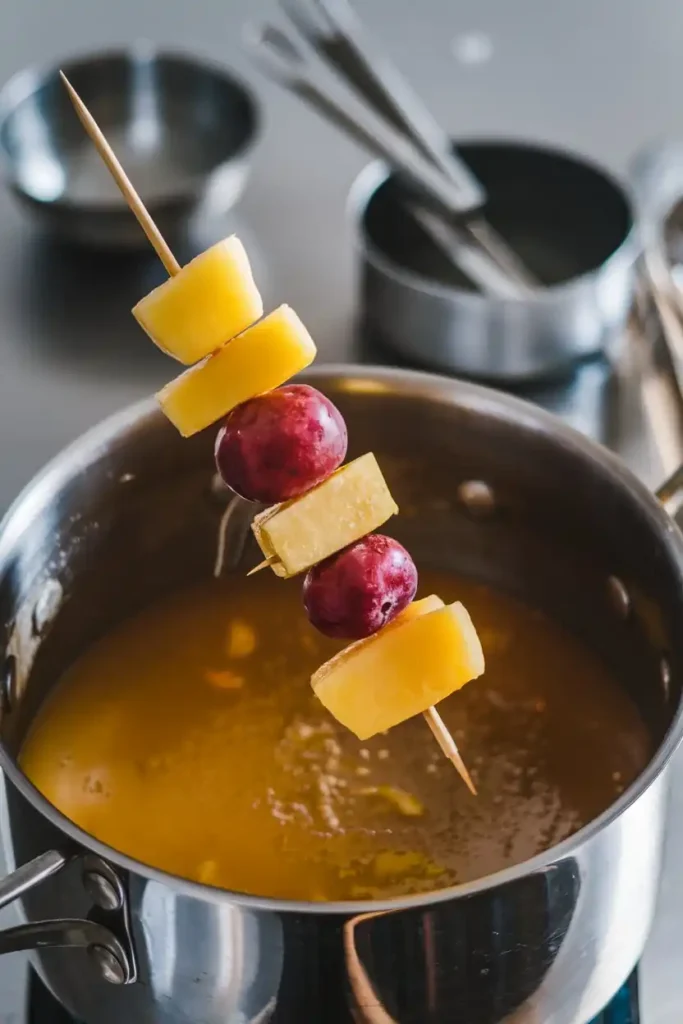
Step 1: Tanghulu Ingredients Preparation
- 1 cup of white sugar (or brown sugar for a caramelized flavor)
- 1/2 cup of water
- Fresh fruits (e.g., strawberries, grapes, hawthorn berries, mandarin slices)
- Skewers
- Optional: Sesame seeds or chopped nuts for coating
Step 2: Prepare the Fruit
- Wash the fruits thoroughly and pat them completely dry with a paper towel. Any moisture will prevent the sugar from sticking.
- Thread the fruits onto skewers. Leave a little space between each fruit for even coating.
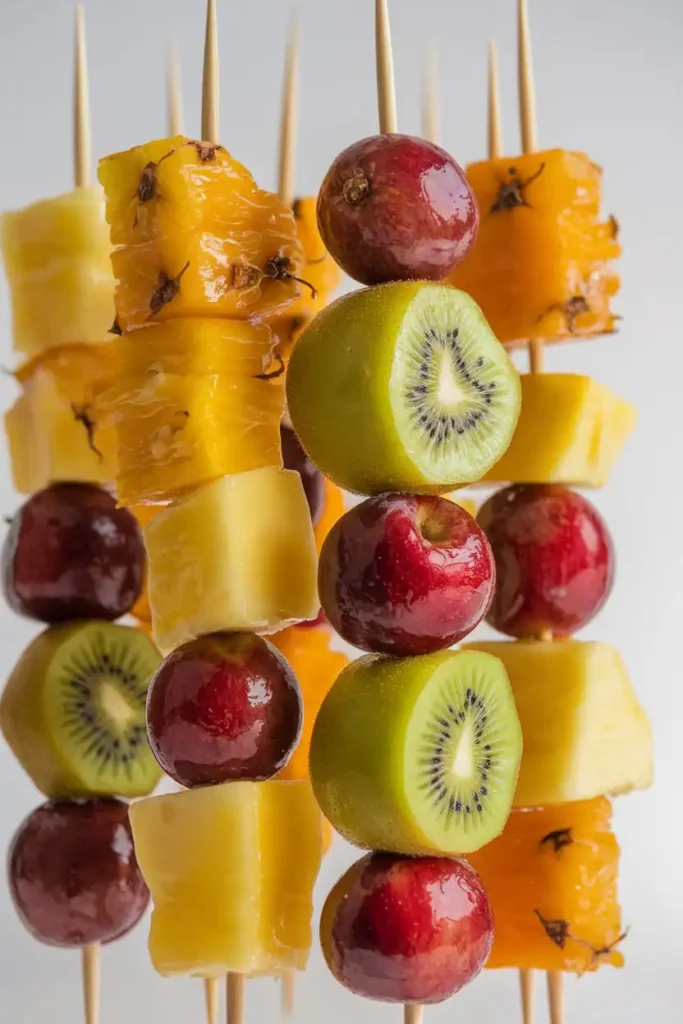
Step 3: Make the Sugar Syrup
- Combine the sugar and water in a small saucepan.
- Heat over medium heat, stirring gently until the sugar dissolves.
- Stop stirring and let the hot sugar syrup boil. It will thicken and bubble.
- To test if it’s ready, use the cold water test: Drop a small amount of syrup into a bowl of ice water. If it forms brittle threads that snap easily, the syrup has reached the hard-crack stage (300°F/150°C).
- Reduce the heat to low to prevent the syrup from hardening in the pot.
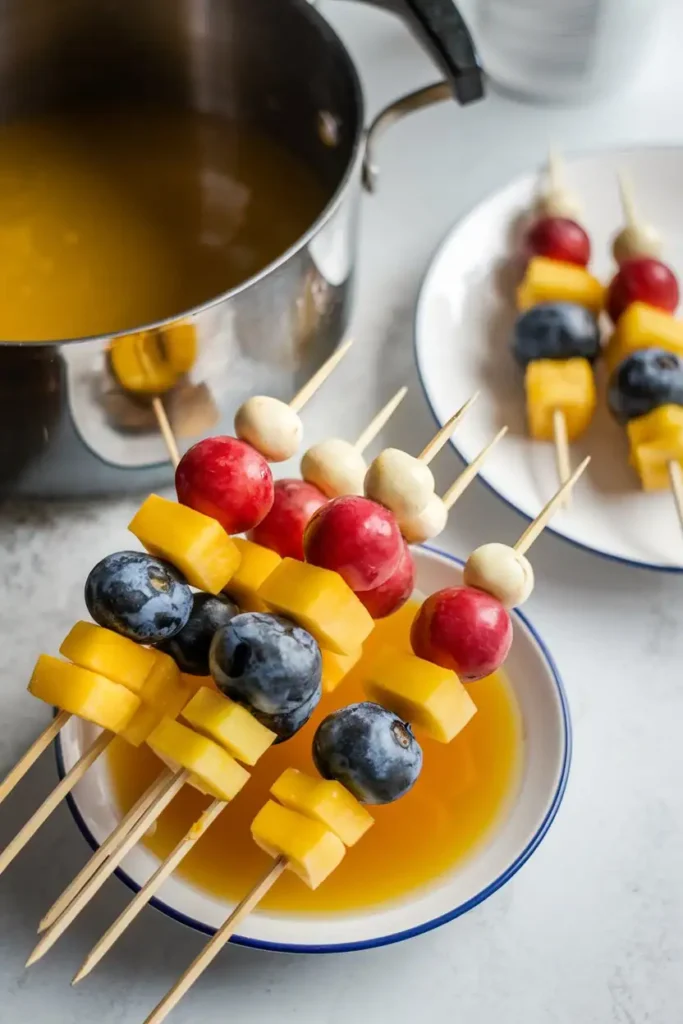
Step 4: Coat the Fruit
- Tilt the saucepan to one side and dip the skewered fruit into the syrup. Rotate the skewer to coat the fruit evenly.
- Work quickly, as the syrup hardens fast.
- Place the coated skewers on a sheet of parchment paper or a greased surface to cool and harden.
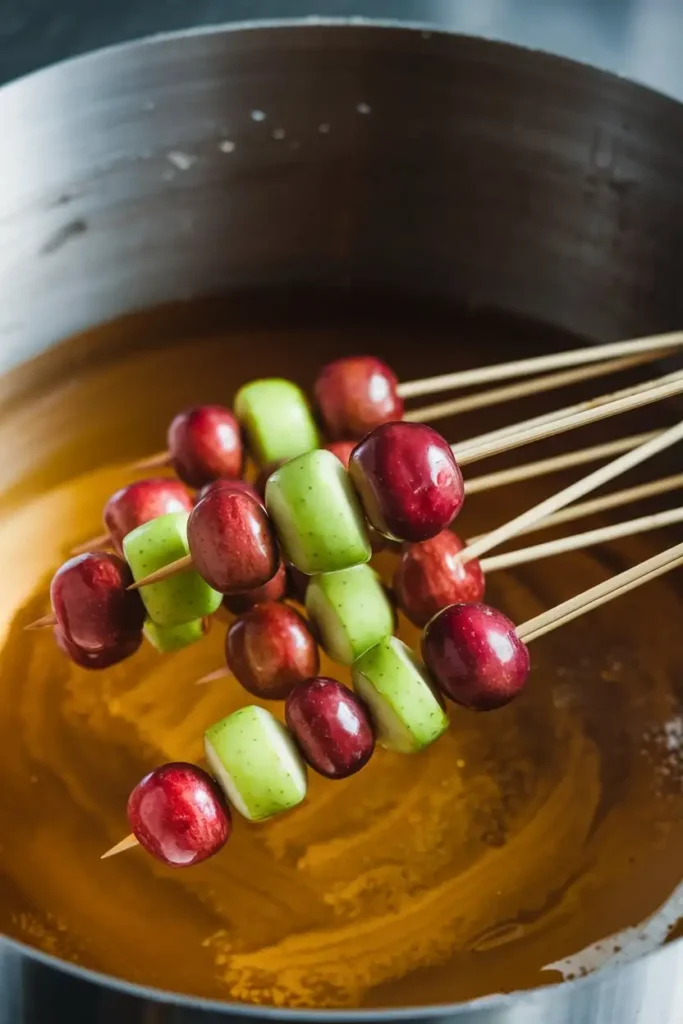
Step 5: Let It Harden
- Allow the Tanghulu to cool for 5–10 minutes is the ideal time frame for making this tanghulu recipe. until the sugar coating is completely hardened.
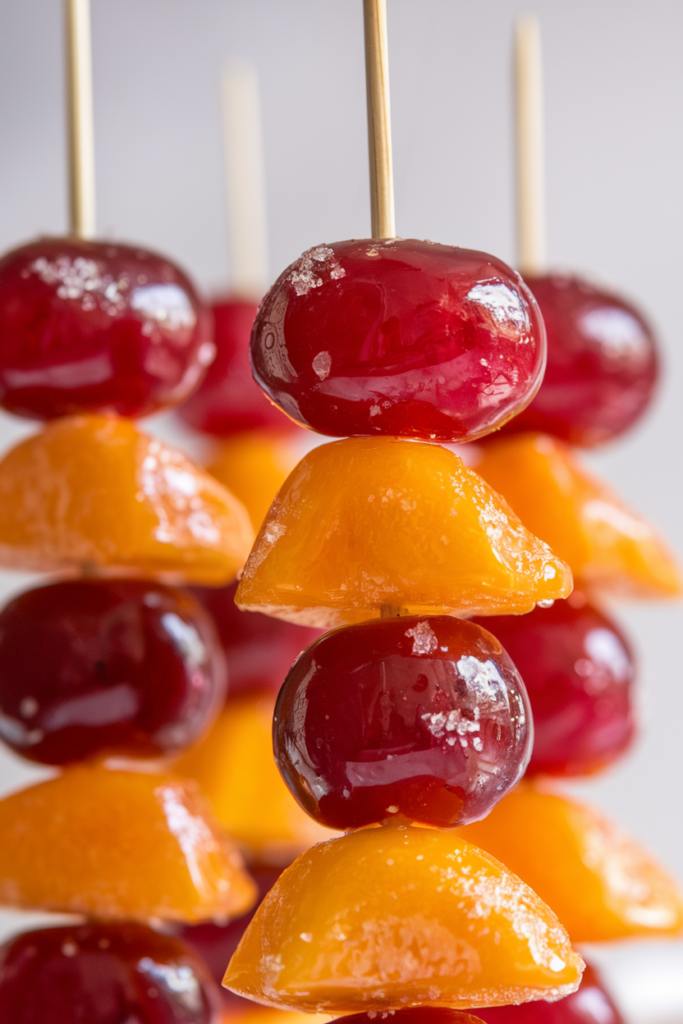
Step 6: Clean The Pot
- Fill the pot with water until it covers all the hardened sugar.
- Place the pot on the stove and bring the water to a boil.
- The heat will dissolve the sugar into the water.
- Let it simmer for a few minutes to fully loosen the sugar.
- Once the sugar has softened, use a wooden or silicone spatula to scrape any remaining residue gently.
- Avoid using metal tools that can scratch the pot.
- Discard the sugary water and rinse the pot with warm water.
- Add dish soap and scrub with a non-abrasive sponge or brush to remove any leftover stickiness.
- Rinse the pot thoroughly with warm water to remove soap or baking soda residue.
- Dry the pot with a clean towel or let it air dry.
Tanghulu Tips For Success
Try something unique and flavorful with Spam Musubi for a savory and portable snack.
How To Serve Tanghulu Fruit?
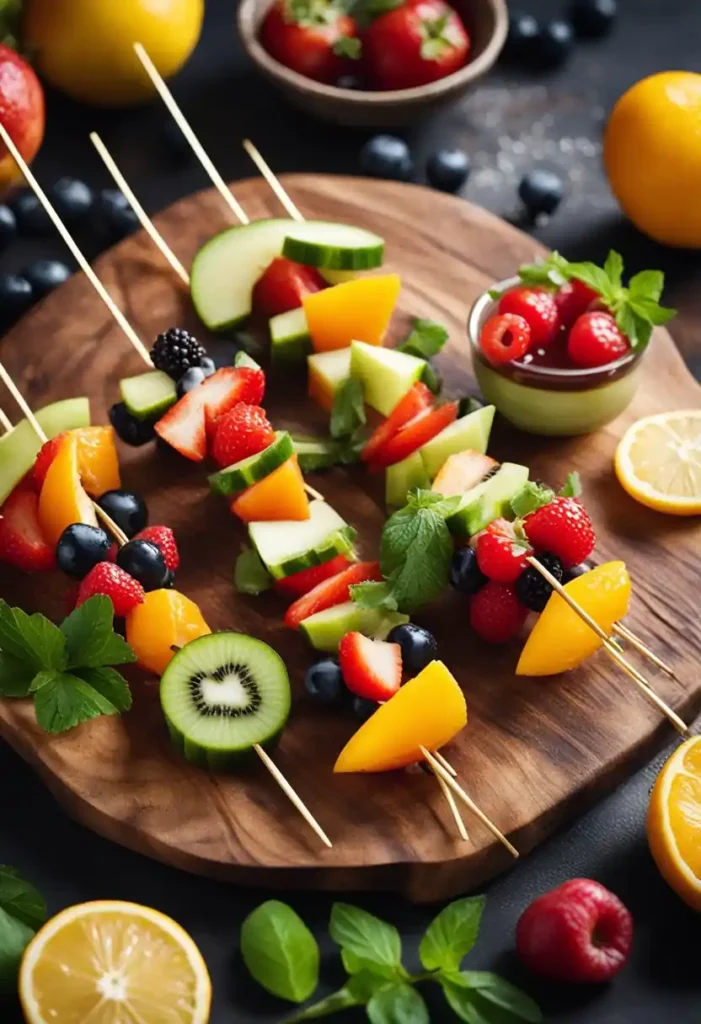
When serving tanghulu, presentation and pairing can enhance the overall experience. I focus on making it visually appealing while considering the right accompaniments. Here are some ideas to elevate your tanghulu and serve immediately. For a cozy meal to complement this treat, start with Miso Soup.
Tanghulu Presentation Ideas
I like to serve tanghulu on a decorative platter or wooden board. This not only looks inviting but also makes it easy for guests to pick their favorite pieces. To add color, I often use a mix of fruits, such as strawberries, grapes and pineapples.
Arranging the skewers in a vertical position in a mason jar can create a fun display. I have also found that using vibrant napkins or small plates can complement the shiny candy coating. For an extra touch, I drizzle the tanghulu with melted chocolate or sprinkle crushed nuts on top right before serving, without stirring the toppings in.
Accompaniments
Tanghulu can be enjoyed as a standalone snack or dessert. I often pair it with a selection of dipping sauces. Options like chocolate sauce or caramel can add an exciting flavor twist.
For a complete meal, I like to include tanghulu as a dessert after dinner. It contrasts well with savory dishes. Additionally, serving a light tea or fruity beverage can enhance the enjoyment of tanghulu, especially when you try tanghulu for the first time.
Combining tanghulu with other snacks, like popcorn or pretzels, creates a playful assortment for parties. This mix appeals to both kids and adults, making it a fun treat for gatherings. Tanghulu makes a great dessert after a crispy and savory appetizer like Crab Rangoon—the perfect combination of flavors!
How To Store Tanghulu?

To keep my homemade tanghulu fresh and enjoyable, I focus on proper storage methods. This snack is best enjoyed when its sugar shell is crunchy and the fruit remains juicy.
Ideal Storage Conditions:
- Store in an Airtight Container: This is crucial to protect tanghulu from moisture and air, which can affect its texture.
- Cool and Dry Place: A pantry or a countertop that stays cool is perfect. I avoid storing tanghulu in the fridge, as the humidity can ruin the crunchy shell.
Shelf Life:
Typically, I find that tanghulu lasts about 1 to 3 days when stored correctly. The type of fruit and the conditions can affect this.
Long-Term Storage Option:
If I need to store tanghulu for a longer time, I can freeze it. To do this:
- Wrap each piece in cling film.
- Place them in a freezer-safe airtight container.
When I’m ready to eat them, I simply thaw the tanghulu at room temperature for a few hours. The texture may change slightly, but it’s still a tasty treat.
By following these guidelines, I make sure my tanghulu remains delicious and enjoyable for as long as possible. Looking for a warm and hearty meal before indulging in this crunchy treat? Try my Hot Pot at Home Recipe for a complete feast!
Variations and Alternatives
Tanghulu offers a lot of room for creativity, especially when using candied strawberries. I can enhance its flavor profile and modify its sweetness to suit different tastes. Here are two important ways to adjust this delicious treat.
Adding Extra Flavors
I enjoy experimenting with flavors by adding simple ingredients to the sugar syrup. For instance, a splash of lemon juice can bring a bright, citrusy note that contrasts beautifully with the sweetness.
Other options include vanilla extract or even a bit of almond flavoring. These additions can give the Tanghulu a unique twist and make it stand out among traditional recipes.
If I want a spicy kick, I can mix in crushed red pepper flakes into the syrup. This creates an exciting sweet and spicy version. The key is to balance the flavors while keeping the sweet treat enjoyable.
Alternative Sweeteners
I sometimes look for ways to make my Tanghulu healthier. Using alternative sweeteners is one option. For instance, honey can be used instead of regular sugar, offering a distinct taste and added health benefits.
I can also try agave syrup or maple syrup for a different flavor. These alternatives change the texture slightly but maintain a delicious candied coating.
When using these sweeteners, I adjust the cooking time and temperature since their properties differ from regular sugar. This ensures I still achieve that glassy finish I aim for when making Tanghulu. Add variety to your table with Salmon Sushi Bake, a flavorful and creamy baked dish.
Save This tanghulu Recipe
Tanghulu Recipe (Chinese Candied Fruit)
Course: Snack, Sweet, FruitCuisine: Chinese Candied Fruit Snack4
servings10
minutes5
minutes15
minutesDiscover tanghulu recipe, a delightful Chinese candied fruit snack! This easy recipe features crunchy Chinese fruit snack and only a few simple ingredients.
Ingredients
Fresh fruit (strawberries, grapes, or other fruits)
1 cup granulated sugar
1/3 cup water
- Equipment
Skewers
Saucepan
Cooking thermometer (optional)
Baking sheet (lined with parchment paper)
Directions
- Prepare the Fruit: Rinse and dry the fruit. Insert skewers into the fruit.
- Make the Syrup: In a saucepan, combine sugar and water. Heat over medium until it reaches the hard crack stage (300°F).
- Coat the Fruit: Remove the saucepan from heat. Dip the fruit skewers into the syrup, rotating to coat fully. Allow excess syrup to drip off.
- Cool the Candy: Place the coated fruit on the prepared baking sheet. Let it cool completely until the sugar hardens.
Tanghulu Recipe: Frequently Asked Questions
I often get questions about making tanghulu. Here are some specific tips and methods to help you prepare this delicious snack at home.

